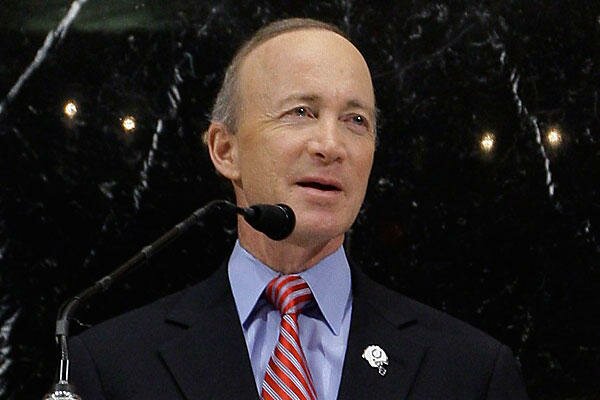Bank of America’s 10K
Blog readers should understand that I am a backtrader – this means that I do more work on my investments after events are realized, in self-flagellation and punishment, than I do before I actually put the money to work.
There is one trade that is, for me, particularly haunting. This is Countrywide Financial Group, CFC. During the third week of August 2007, Countrywide’s stock was on its way to zero, and I was supposed to make about three or four million dollars from a monster short position that combined written calls, near at-the-money puts, long-dated out-of-the-money puts, and short stock. Instead Bank of America invested $2billion in the company and CFC briefly hit 27 in after hours trading. I was forced out of large parts of the position and ended up breaking even on the entire trade (which started in early summer) and losing a ton the week of the BofA investment.
Having gone through this experience, there are few things that incite me more than pictures of Ken Lewis’ face. I truly believe him to be the dumbest man ever to head a major American corporation.
Bank of America has become, forever in my opinion, America’s bank. BofA is the true zombie bank that will only survive with substantial government help. It is a burden of the state — whether the government bares the burden by taking direct ownership or by giving invisible subsidies (Fed purchases, near zero Fed Funds) makes little difference.
There are two silent bombs on BofA’s books at the moment. First, there are a lot of bad loans. Loaning to American consumers and businesses at a couple of points above the risk-free rate was just never a very good business, and BofA was particularly bad at it.
Second, BofA faces contingent liability for fraud. Yes, just when you thought that financial companies were off the hook for all types of fraud, the legal system has come in and said, “You know those sh*tty mortgage bonds you sold to pension funds? We think there was something not quite right with those transactions and we want you to buy them back near par.”
From BofA’s 10k: “We have been, and expect to continue to be, required to repurchase loans and/or reimburse the GSEs and monoline bond insurance companies (monolines) for losses due to claims related to representations and warranties made in connection with mortgage-backed securities and other loans.”
In plain English, this would read, “for losses due to misrepresentations.”
Countywide was in the business of misrepresentations (hence my short position in 07. At one point I thought the fraud would be revealed in a few weeks — now we’re four years on, and we’ve uncovered about half of it), and the courts – to everyone’s shock – are now saying that if you sell bonds to someone on fraudulent terms, you might have to buy them back.
When BofA sold a mortgage bond to a private entity who then insured the bond with a monoline insurer like MBIA, MBIA would rely on BofA’s documentation about the loans. BofA might note, for example, that 90% of the loans in a particular mortgage bond are “owner-occupied housing”. This is relevant because owner-occupied housing is less likely to default than investment properties. The courts are now taking the position that if MBIA can prove that, say, only 15% of the homes were “owner-occupied”, this is fraudulent conveyance of the bonds on the part of BofA and BofA can be forced to compensate MBIA for the losses incurred in insuring the bonds.
Now, in next part of the post, we’re going to dig into the gritty detail, much of which is quoted directly from the 10K. This part can be safely avoided. I wish I could convey to you, dear reader, what goes through my head as I read these things. And I wish I could understand why – given what goes through my head – I continue to read these things.
From the 10K: “On December 31, 2010, we reached agreements with Freddie Mac (FHLMC) and Fannie Mae (FNMA), collectively the GSEs, where the Corporation paid $2.8 billion to resolve repurchase claims involving first-lien residential mortgage loans sold directly to the GSEs by entities related to legacy Countrywide (Countrywide). The agreement with FHLMC extinguishes all outstanding and potential mortgage repurchase and make-whole claims arising out of any alleged breaches of selling representations and warranties related to loans sold directly by legacy Countrywide to FHLMC through 2008, subject to certain exceptions we do not believe will be material. The agreement with FNMA substantially resolves the existing pipeline of repurchase and make-whole claims outstanding as of September 20, 2010 arising out of alleged breaches of selling representations and warranties related to loans sold directly by legacy Countrywide to FNMA. These agreements with the GSEs do not cover outstanding and potential mortgage repurchase and make-whole claims arising out of any alleged breaches of selling representations and warranties to legacy Bank of America first-lien residential mortgage loans sold directly to the GSEs, loans sold to the GSEs other than described above, loan servicing obligations, other contractual obligations or loans contained in private-label securitizations. In addition, we have other unresolved representation and warranty claims from the GSEs and certain monolines, and other non-GSE counterparties, and certain monolines have instituted litigation against us with respect…








